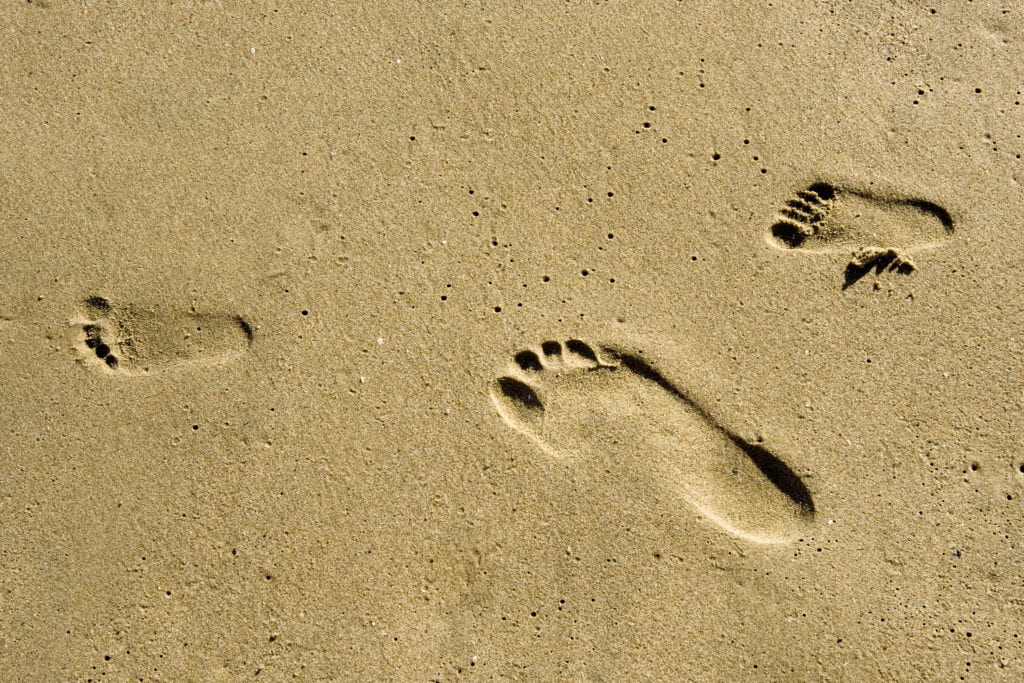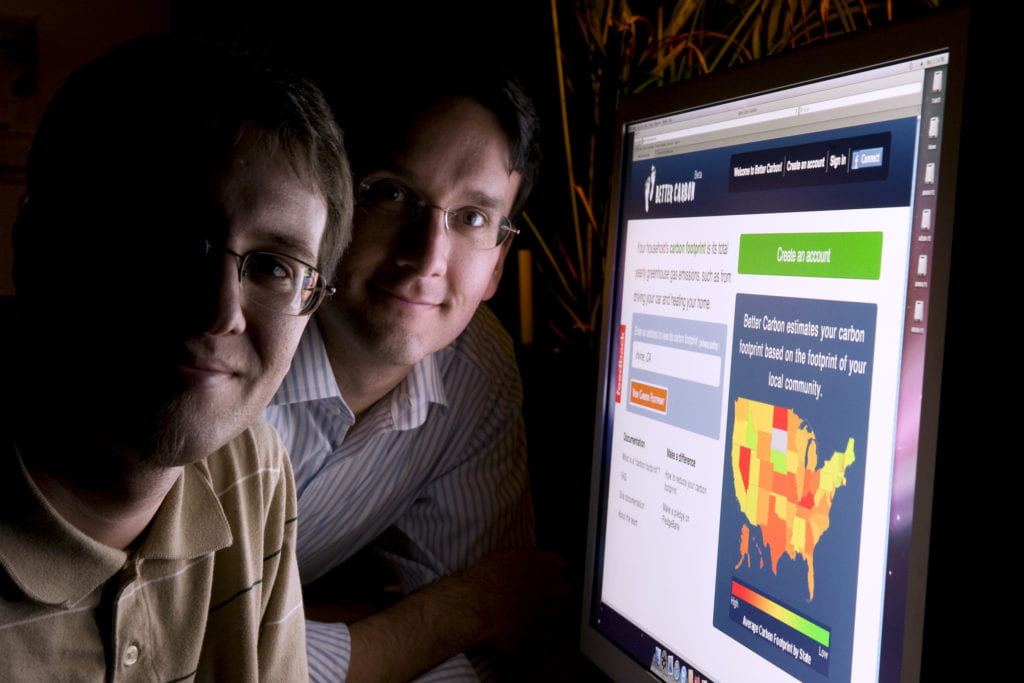How big is your carbon footprint?
UCI research group uses collaborative filtering to build a better online carbon footprint calculator.
Netflix, the popular movie-delivery site, “predicts” films its users may enjoy. The process doesn’t involve mind reading; it’s simply computer science.
A collaborative filtering system allows Netflix to group users with similar viewing and rating histories and, consequently, anticipate which movies might appeal to which customers.
Bill Tomlinson, UC Irvine associate professor of informatics, and his research group use collaborative filtering too, although in a slightly more altruistic way. Informatics doctoral student Joel Ross and information & computer sciences undergraduate Nitin Shantharam incorporated the technique into a Web-based carbon footprint calculator, enabling it to more accurately “predict” users’ effect on the environment based on answers to a few quick questions.
Most carbon footprint calculators require detailed information about users’ homes, utilities expenditures, airline travel mileage, cars, food choices and recycling efforts.
In contrast, the Social Code Group’s Better Carbon calculator estimates carbon footprints primarily by place of residence, which reveals more about a person’s lifestyle than might be expected. “There’s an illusion in America that we’re all unique, but much of the data we’re gathering is not that hard to predict,” Tomlinson says.
A home address narrows down many factors contributing to a carbon footprint: amount of air travel, likely driving habits and even dietary choices. “We’re able to make an educated guess based simply on a user’s location,” he says.
While the initial estimate is rough, it can be refined by providing some of the same information requested by other carbon calculators. The Better Carbon advantage is that users don’t have to answer all the questions to get an accurate assessment; each response adjusts the calculation by facilitating a closer match between the user and others with similar answers. The collaborative filtering technique produces comparable carbon footprint estimates for those with equivalent lifestyles.
Better Carbon was designed to be faster and easier than its brethren so that more people would utilize it to gauge their environmental impact. And the more users the site attracts, the more precise it becomes. Better Carbon was launched this spring with data collected from 400 individuals, but each time someone enters new data, it further filters the resulting estimates.
“The more information the system gets, the finer the distinctions become,” Tomlinson says.
As environmental research progresses, more questions can be added to the calculator. Because all queries on other sites must be answered before a prediction can be made, the number of them is limited. Better Carbon, on the other hand, could eventually address up to 70 factors.
“You can answer just one question or as many as you want. If even a couple of people answer a question, it influences the rest of the system and helps us produce estimates for those values,” Ross says. “So for the price of 10 questions, we can give you answers to 50.”
Better Carbon results include a pie chart detailing what percentage of a user’s footprint is attributed to specific lifestyle choices. The site also incorporates a social action component. People are asked to specify – anonymously – one action they take to reduce their carbon footprint, and those replies are sorted and displayed so users can see what others with similar lifestyles are doing.
“The system can show you where your problem areas are, and others’ recommendations can give you ideas on how to address them,” Tomlinson says. Better Carbon is also available through a Facebook application, letting users compare their carbon footprints with those of their friends.
“A carbon calculator is an educational and informational tool that can inspire people to adjust their own lives or start taking broader political action,” Tomlinson says.
Adds Ross: “You can find out which of your behaviors have the largest impact and then act on that information. We’re trying to improve that process.”
The researchers’ paper on the project was accepted to last week’s IEEE International Symposium on Sustainable Systems & Technology in Washington, D.C.

